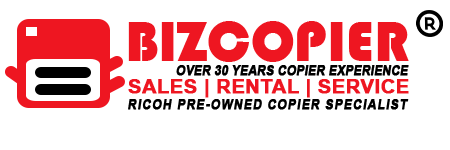The right printers and copiers make running your office more efficient. What should you do if you need a new Ricoh printer? Depending on your business needs, purchasing or leasing a Ricoh printer can be a wise decision. You’ll need to ask yourself a few questions to determine the best options for your needs. 1) How Much Money Can You Afford to Spend Right Now?One of the first and most important considerations is how much money you currently have in your budget. Purchasing Ricoh printers and copiers outright can be costly. Even the most affordable commercial quality printers for a small office can cost upwards of $1,000. In addition, a larger device with more memory or sheet capacity can cost up to $12,000. Spending this much money upfront is intimidating for a startup with limited resources. If you decide to lease a Ricoh copier, you will only have to pay a low monthly fee. This can save you money when first setting up your office. Instead of spending a lot of money on equipment, you can put it towards more business investments. This allows you to accumulate cash reserves that you can use later if you decide to buy. 2) Do You Need Technical Support for Your Ricoh Printer?Check the product specifications carefully when looking into a Ricoh printer lease contract. When you lease a Ricoh printer from many companies, you will notice that you also receive technical support as part of your contract. These services include maintenance, repairs, setup, and moving, and they are flexible. If something breaks down or you are having trouble setting up something, simply call your leasing company and let them handle everything. Meanwhile, if you buy a copier or printer outright, you are responsible for all tech support and maintenance. This is useful if you want a specific service team to work on your equipment. However, it adds a significant amount of stress and extra work to your job. One of the primary benefits of leasing a printer is having a professional team handle all of your tech support. It reduces administrative work, allowing you to focus on your core business. 3) Do You Have Multiple Departments That Need a Ricoh Printer?Consistent printing standards are not a consideration for all businesses. If you have multiple departments or branches, it is critical to get printers that produce the same document style. When purchasing printers, this can be difficult. If you buy from a local vendor, you might not be able to get enough of the same printer. Your office may end up with devices that cannot produce the same types of documents. Companies that lease Ricoh copiers have a wide selection of printers to choose from. This centralised supply of printers and copiers makes it easier to obtain the same equipment style for all of your departments. When you can get similar products for your different departments or branches, you can ensure that everyone in the company follows the same printing standards. 4) Is Your Business Going to Grow?Your future plans will have a significant impact on whether you should buy or lease. You must consider whether your current printer requirements will be significantly different from your printer requirements in a year. In some cases, leasing is preferable because it avoids the hassle of purchasing a small printer only to have to sell it and buy a larger one later. However, keep in mind that some leasing agreements can be rigid. Whether your expansion plans influence your decision to buy or lease a Ricoh copier, the end result is determined by the contract you choose. You should carefully compare various contracts and office supply companies to see if the contract binds you to a specific model. Some companies offer flexible contracts, allowing you to easily swap out printers and add more devices as your business grows. Others may lock you into a leasing contract that forces you to use a subpar printer for a period of time. 5) Are You Trying to Save Money in the Long Run?Another cost to consider when deciding between leasing and purchasing office equipment is the long-term cost. This adds up to the total costs of leasing or purchasing a printer. Long-term costs are usually not as significant in business as immediate costs. Comparing the two, on the other hand, can be a useful way to make your decision. Purchasing a printer will always be less expensive in the long run. When you buy a printer, you have a single, significant up-front cost and the opportunity to build equity for your company. Then, when the printer is no longer needed, you can sell it to recoup some of your investment. Meanwhile, when you lease a printer, you pay a low, ongoing fee. This adds up over time, and you do not build equity in a piece of equipment that you can resell. The only time you would pay more to lease a printer is if you only need to print for a short period of time and plan to transition your office to a paperless setup in the near future. 6) Is Cutting-Edge Equipment Important to You?When you keep the same printer for years, a purchased printer is only slightly less expensive than a leased one. This, however, can be a problem for some businesses. Printers may appear to remain unchanged for years, but technology is constantly evolving. A printer from a few years ago might not have Wi-Fi printing, scanning, or other modern conveniences. You will need to lease a printer to keep your office up to date. Leasing gives you access to a wide range of new and useful devices. Because you update your lease on a regular basis, you can always swap out your printer for another device. This makes it simple to ensure that your office workers have access to the latest technology. *Other Model AvailableRICOH MPC3503/ MPC5503 | RICOH MPC3504/ MPC5504 CONTACT US: 03-3341 6296 | 018-788 6296 | 018-228 6296

Recent Comments